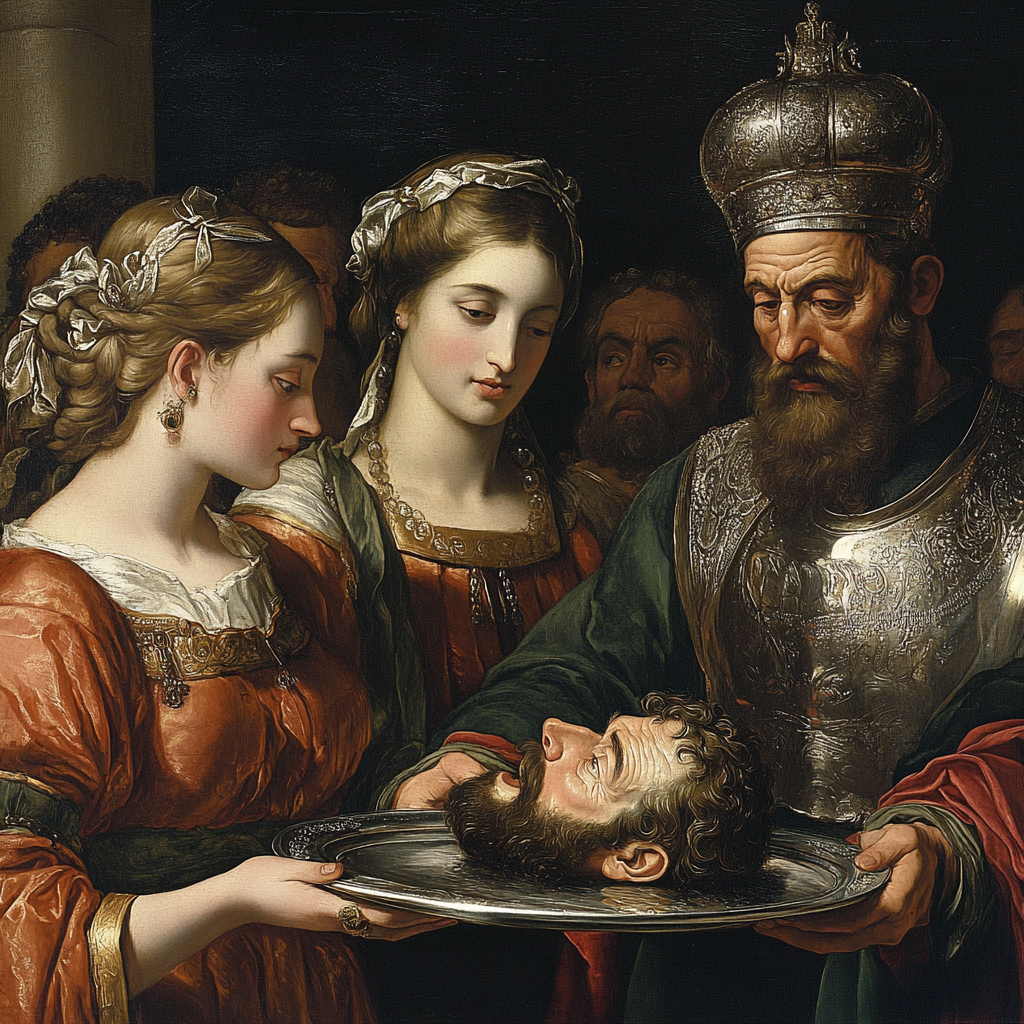An Enigmatic Exchange in the Gospel of Thomas
The Gospel of Thomas, a non-canonical collection of Jesus’ sayings, preserves a striking dialogue between Jesus and a woman named Salome. This passage, Logion 61, reads:
Salome said, 'Who are you, man, that you have come up on my couch and eaten from my table?' Jesus said to her, 'I am he who exists from the undivided. I was given from the things of my Father.' Salome said, 'I am your disciple.'
This brief yet profound exchange encapsulates the very essence of Jesus’ radical ministry—a direct confrontation with social hierarchies, an unshakable proclamation of divine identity, and the instantaneous conversion of a figure seemingly entrenched in power.
This essay will explore, in a speculative manner, the possible identity of this Salome, the implications of her transformation, and the broader theological and political context of Jesus' interaction with her. Was she the infamous Salome of Herod’s court, the dancer whose request led to the beheading of John the Baptist? If so, does this exchange hint at an act of divine mercy—Jesus redeeming one who had once been instrumental in the death of his forerunner? Furthermore, what does her transformation suggest about Jesus’ larger strategy—not only in the realm of spiritual salvation but also in the subtle subversion of the power structures of his time? By analyzing ancient sources, biblical and extra-biblical traditions, and theological commentary, we shall attempt to unravel the mystery of Salome’s role in the Gospel of Thomas and her potential significance in the historical Jesus' ministry.
Salome in the Canonical and Apocryphal Traditions
Salome in the Gospels of Mark and Matthew: The Instrument of John’s Death
In the Synoptic Gospels (Mark 6:17-29, Matthew 14:3-11), Salome appears as a pivotal yet passive figure, manipulated by her mother, Herodias. At a royal banquet, she dances before Herod Antipas, so pleasing him that he offers her any request. Under her mother’s influence, she demands the head of John the Baptist. This act cements her in Christian tradition as a femme fatale, a symbol of corruption and the dangers of unchecked power.
However, the text does not attribute malice to Salome herself. She is portrayed as a young girl (κοράσιον, korasion), suggesting naivety. Her actions, therefore, are not necessarily of her own volition but rather shaped by the ambitions of her mother. Could this interpretation allow for the possibility of later redemption?
Salome in the Gospel of Thomas: The Seeker of Wisdom
The Salome of Thomas is an entirely different figure—bold, questioning, and immediately receptive to Jesus' self-revelation. She initially challenges him: 'Who are you, man, that you have come up on my couch and eaten from my table?' This question carries social and cultural implications. In the Jewish and Greco-Roman world, a woman of high status would not have been accustomed to men freely approaching her with such familiarity. Yet, Jesus does not apologize or withdraw; instead, he answers with an assertion of divine preexistence. In response, Salome does something extraordinary—she submits entirely, declaring herself his disciple.
This passage resonates with other instances where Jesus' mere presence compels transformation—the calling of the fishermen (Matthew 4:18-22), the Roman centurion’s declaration of faith (Matthew 8:5-13), and even Paul’s dramatic conversion (Acts 9:3-9).
If this is the same Salome who once stood in Herod’s court, then what we have here is not just a conversion but a redemption of profound magnitude—a woman once responsible for the death of John the Baptist now pledging allegiance to the very movement that John heralded.
The Political Implications of Jesus Engaging Salome
Infiltrating the Enemy’s Court
Salome, if she remained influential in Herod’s palace, could act as an informant or even a sympathizer within the very government that sought to suppress Jesus’ movement. Herod, already paranoid about John the Baptist’s influence (Mark 6:20), would have found it deeply unsettling to learn that the very woman who had once demanded John’s death was now following Jesus.
Turning a Weapon Against Itself
The Jewish historian Flavius Josephus records that John the Baptist was executed because Herod feared his ability to incite rebellion (Antiquities of the Jews, 18.5.2). If Salome defected from Herod’s side to Jesus’, it would signify an ideological betrayal within the palace itself.
Breaking the Boundaries of Power and Gender
Jesus frequently subverted social expectations regarding women (Luke 10:38-42, John 4:7-30). In the case of Salome, his disregard for her status as either royalty or sinner aligns with his consistent pattern of seeking out those on the margins—whether tax collectors, prostitutes, or Roman centurions.
Ancient and Modern Commentary on Salome’s Role
The Gnostic Tradition: Salome as a Seeker of Wisdom
Other apocryphal texts, such as the Gospel of the Egyptians, portray Salome as a figure given access to deep spiritual truths. In one passage, she asks, 'How long will death prevail?' Jesus answers, 'As long as women bear children.' This exchange, like Thomas 61, suggests that Salome is not only a disciple but one concerned with existential, cosmic truths.
Orthodox Interpretation: Salome as a Cautionary Tale
The Orthodox tradition does not explicitly link the Salome of Thomas to the Salome of Herod’s court. However, early Church fathers often saw figures like her as representations of worldly seduction and the need for repentance. Some later commentaries suggest that even the most fallen can be redeemed—mirroring the story of Paul, or even the Protoevangelium of James, where another Salome (a midwife) doubts Mary’s virgin birth but is later healed.
Contemporary Scholarship: A Historical Possibility?
Modern scholars debate whether the Thomas Salome is the same as the Herodian Salome. Elaine Pagels and other scholars of Gnosticism suggest that Thomas preserves traditions of women as significant disciples, elevating Salome beyond the constraints of the Synoptic tradition. If this is true, then her presence in Thomas may reflect an early Christian belief that Jesus did, in fact, draw followers from unexpected places—including the halls of power.
Conclusion: A Case for Redemption
Whether or not the Salome of Thomas is the same as the Salome of Herod, her transformation from skeptic to disciple mirrors the radical nature of Jesus' ministry. His ability to break social boundaries, subvert political power, and extend mercy to the most unexpected individuals speaks to the heart of the Gospel message.
If this is the same Salome, then her journey—from the banquet halls of Herod’s court to the intimate circle of Jesus—would stand as one of the most striking examples of divine mercy in all of early Christianity.


Member discussion: